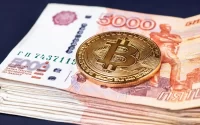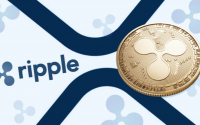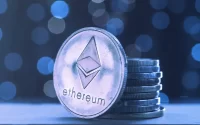What is Polkadot coin, how is it better than Ethereum along with its uses?
Know about Polkadot? No!

It is the multi-chain network that raised around $145 million in the year 2017 and has not yet. But unlike many other blockchain projects from that particular era, Polkadot has not yet taken any of the money and run. The team is led by the founder of Ethereum Gavin Wood who has been beavering away. Polkadot is now finally poised to launch.
- The Dot token is used for staking, bonding, and governance on the Polkadot network.
- After two weeks of votes, the community finally decided on the redenomination of the DOT token on August 21.
- Redenomination is the tactic that is the same as the stock split in the traditional equity markets.
So how does it work?

Polkadot will allow all sorts of assets to be transferred cross chain to any blockchains housed within the capacious network. It promises high scalability due to the shared set of validators which will be useful for protecting transactions on many blockchains. New blockchains join polkadot that can tap into such a security model from GEt-go.
- The governance of the polkadot model shares few similarities with Tezos whereas network upgrades are voted and proposed by the community.
- Most of the interoperability projects are aiming to enable assets to be swapped cross-chain – Polkadot goes on.
- It also enables data to be swapped in the same way and supports cross-chain computation.
The use cases for Polkadot involves –
- Smart contract chains
- Data curation networks
- Oracle chain
- IoT
- Storage of file
- Identity

So basically anything which you can currently do on blockchains that you will be able to do with the blockchain network named Polkadot with the additional bonus of being able to move the assets between chains endlessly.
What are the uses, benefits, and features of Polkadot?
There are several uses –
- True interoperability – Polkadot allows the cross-blockchain transferring of any data or asset type and not only tokens. Connecting to Polka Dot provides you the ability to interoperate with the huge variety of blockchains in the network of Polkadot.
- Economic and transactional scalability – Polkadot offers unprecedented economic scalability by allowing the common set of validators for securing many blockchains. It offers transactional scalability by spreading transactions over many parallel blockchains.
- Easy innovation of blockchain – Develop the custom blockchain in a few minutes by using the Substrate framework. Connect your chain to the Polkadot and get interoperability and security from the first day. This ease of development will be helpful for the growth of Polkadot’s network.
- Future-proof and Forkless – Polkadot can upgrade without hard forks to inbuilt new features and fix bugs. This capability allows Polkadot to adapt towards changes easily and upgrade itself as new technologies become available.
- Safe for all – Polkadot data validity scheme and its availability enables the chain to get interaction with every other with some meaning. The chain remains independent in its governance but united in their security.
- User driver network governance – Polkadot has a sophisticated governance system where every stakeholder has their voice. Upgrading to the network is coordinated on-chain and enacted autonomously by assuring that the development of Polkadot reflects the community values and prevents stagnation.
Three main features of Polkadot –

There are three main features or uses of Polkadot –
- Governance – Polkadot holders of the token have the overall control over the protocol. All privileges which on other platforms are exclusive towards miners that will be given to the Relay chain participants that are DOT holders. It includes managing exceptional events like protocol upgrading as well as fixes.
- Staking – The game theory incentivizes token holders to behave in the proper methods. Good actors are awarded by such a mechanism whereas bad actors will lose their stake in the network. It assures the network to be protected.
- Bonding – New parachains are added by bonding tokens. Non-useful or Outdated para chain are eliminated by just eliminating the bonded tokens. It is a particular form of proof of stake.
If talking about similarities, then Ethereum and Polkadot even have few similarities!

In similarities, both Ethereum and Polkadot –
- Aims to offer the space where developers can develop the decentralized applications
- Includes the smart contracts functionality completely on the basis for Ink and Ethereum.
- When looking forward to Ehereum 2.0, both platforms are following the scaling strategy based on parallelized execution.
- Every execution thread is known as a shard in Ethereum 2.0 and the para chain or parathread in Polkadot.
- Use WASM as the underlying technology to power on-chain state and logic transitions.
After such similarities, there are few differences between Polkadot and Ethereum.
Difference between Ethereum and Polkadot! How Polkadot is better than Ethereum?

The biggest difference is designing goals. Ethereum has the aim to be the platform for distributed finance and smart contract execution while Polkadot has the vision to help people build complete blockchains and integrate these blockchains.
- Architecture – Ethereum has a single chain form and multiple chain formation while Polkadot has parachains as well as parathreads.
- Backend – Ethereum works on Javascript like solidify and Python-like language like Vyper whereas Polkadot works on the Rust and substrate framework.
- Environment execution – Ethereum has the Single VM execution and multiple homogeneous shards while Polkadot has multiple heterogeneous parachains executions.
- Composability – Ethereum goes well with smart contracts where they call each other synchronously in the same shard or asynchronously between shards. Polkadot is the smart contract where they can call each other synchronously or asynchronously across parachains.
- Governance – Ethereum has the off-chain Governance and Polkadot has on-chain governance such as Democracy, treasury modules, and council.
- Execution of program fees – Ethereum fees are based on metering or per call gas whereas Polkadot fees work based on the market chain for para chain slot with unlimited usage or per call parathread fee.

Polkadot is built on the Flexible framework and is new and not proven!
The greatest strength of Polkadot is the substrate which is the development framework to create Polkadot compatible blockchains providing various levels of abstraction depending completely on the needs of developers. Polkadot is itself developed using a substrate. It decreases the time, money, and energy needed for creating the new blockchain.
Substrate offers a much larger canvas for developers to experiment on when compared to smart contract platforms such as Ethereum. It enables full control of the underlying consensus, economics, storage, and state transition rules for the blockchain and the things that you cannot modify on the standard smart contract platform.


